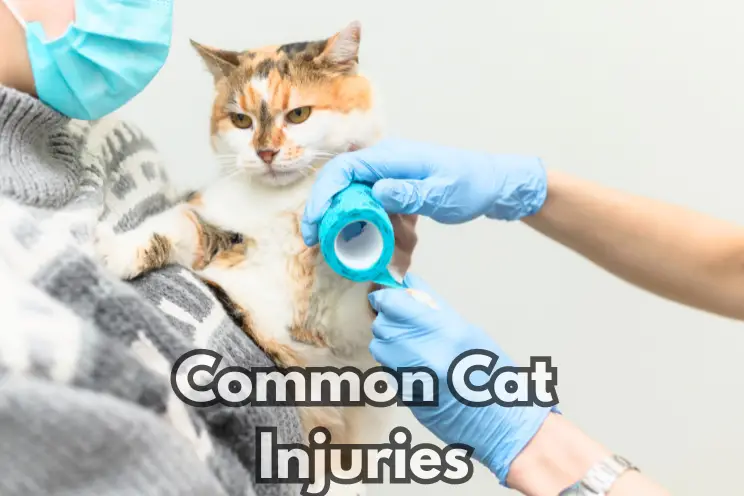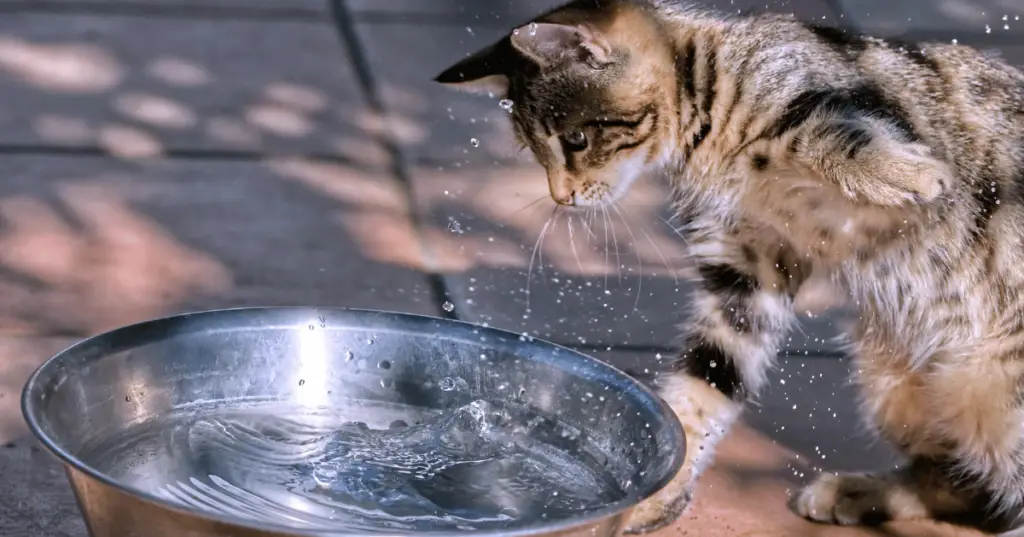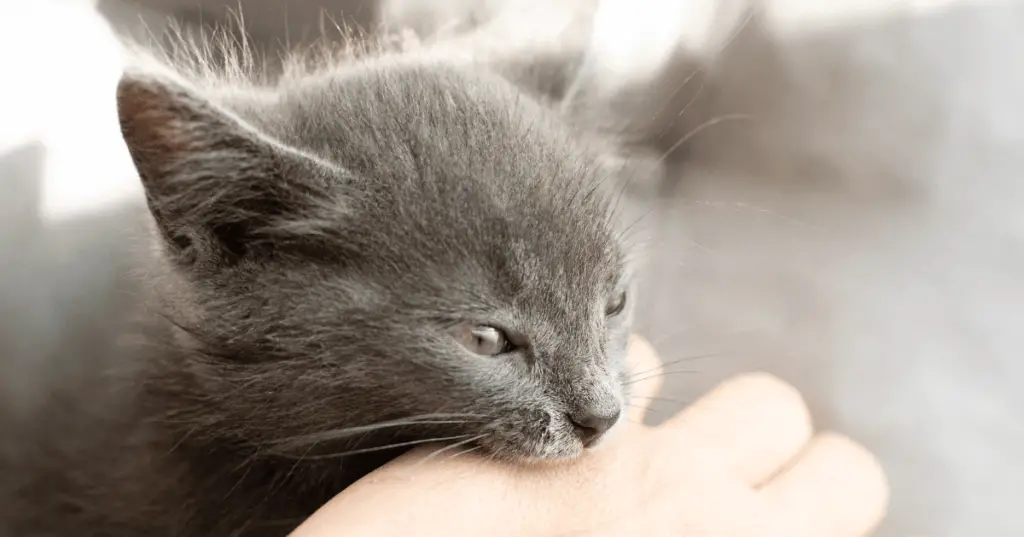Common Cat Injuries with Signs, Treatments, and When to Seek Help
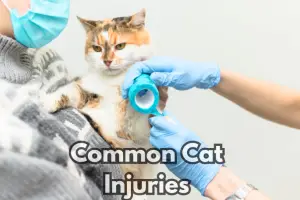
Cats are adventurous creatures; they love to jump, climb, and explore, but the risk of injury comes with this curiosity.
Understanding how injuries heal and when to intervene is crucial for keeping your feline friend safe and healthy.
In this blog, you will learn about;
- Do cat injuries heal by itself?
- How do cats act when they are in pain?
- How to know your cat is hurt?
- Most common cat injuries
- Home treatment tips
- When to seek veterinary help?
Can Cat Injuries Heal by Themselves?
Cats are resilient pets and master at hiding their problem at the initial level, but not all their common injuries heal on their own.
Small wounds or minor scratches can often self-heal and originate from cat injuries from fighting. Moreover, cats have a fast-healing metabolism due to their efficient immune systems.
However, some injuries are serious and need the help of a vet if your pet has a deep injury, it broke a bone, or an infection appears. If untreated, the small wound may become infected or even worse.
There are certain common cat injuries, such as lacerations, fractures, or others that involves the eyes or internal organs; these injuries cannot heal until a veterinarian treats them.
Failure to address these may result in more severe effects or may even cause a cat’s death.
Reaction of Cats When They Are in Pain
Compared to dogs, cats are less expressive in showing pain. This trait helps them to protect themselves from predators.
Check out for the subtle behaviors that can give you clues:
- Changes in movement
A cat in pain may limp, move stiffly, or avoid jumping and climbing. They might walk on one limb or drag their legs.
- Vocal changes
Cats may become more vocal, meowing or yowling more often. Some might do the opposite and become silent, withdrawing from usual interactions.
- Hiding or withdrawing
If your normal social cat starts hiding, it could be a sign of discomfort. They might seek out quiet, isolated places to rest.
- Aggression or irritability
A friendly cat may become aggressive, hissing, or biting when touched in painful areas.
- Appetite loss
Cats in pain may refuse food, even their favorite treats, and they might stop grooming themselves.
These signs shouldn’t be ignored. Even minor changes in behavior can signal a deeper issue.
How to Tell If Your Cat is Hurt

You have to observe your cat on routine to see if something wrong has not happened to them. Sometimes, injuries aren’t visible, especially if they involve internal organs or occur under the fur.
Timely notice the below mentioned signs to catch common cat injuries or issues:
Heavy or labored breathing
If your cat is breathing rapidly or seems to be struggling, it could indicate internal damage or pain.
Visible wounds
Cuts, punctures, and abrasions are obvious signs, but keep an eye out for redness, swelling, or oozing.
Bleeding or discharge
Any open wounds or bleeding should be treated immediately. Look for signs of infection, like pus or a bad smell.
Lethargy or weakness
Cats that seem excessively tired or unwilling to move may be dealing with internal injuries or severe pain.
Limping or difficulty walking
Cats usually avoid putting weight on a leg or moving awkwardly when they have broken bones, sprains, or muscle injuries.
Most Common Cat Injuries
1. Bite Wounds
- Major trigger fights with other cats or dogs.
- Deep punctures can lead to painful abscesses or infections.
- Symptoms: Swelling, redness, or oozing from the bite.
- Treatment: Use antiseptic for wound cleaning; consult a veterinarian for antibiotics if it worsens.
2. Sprains, Strains, and Fractures
- Caused by falls, accidents, or rough play.
- Cats may limp or avoid using an injured leg.
- Symptoms: Limping, swelling, or reluctance to move.
- Treatment: The veterinarian must assess the injury; surgery or immobilization is often suggested.
3. Eye Injuries: Common Cat Injuries
- Occur from scratches, foreign objects, or infections.
- Left untreated, eye injuries can worsen.
- Symptoms: Redness, excessive tearing, or discharge.
- Treatment: Flush the eye with saline; visit a vet if necessary.
4. Burns
- Hot surfaces, chemicals, or electrical sources cause it.
- Burns may not be immediately visible but can damage tissues.
- Symptoms: Redness, blisters, or swelling.
- Treatment: Rinse with cool water; severe burns need veterinary attention.
5. Cat Fight Injuries
The most frequent injuries from catfights are scratches and bites.
If left untreated, these wounds might get septic.
Symptoms: Fever, edema, and scratches.
Treatment: Clean the wounds; see a veterinarian if there is any swelling or fever.
Cat Injury Home Treatment Tips
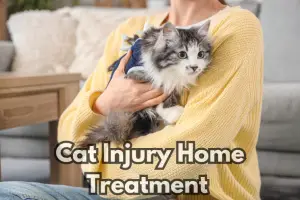
Not every feline injury necessitates a trip to the vet.
Here are some pointers for at-home care:
- To clean minor wounds and scratches, use saline or a mild antiseptic solution.
- Antiseptic ointment facilitates healing and reduces the risk of infection.
- Ensure that your cat is unable to lick or aggravate the wound.
- To prevent your cat from licking, use a cone.
- Keep an eye out for any infection-related symptoms, such pus, redness, or swelling.
- If the infection or wound does not heal after a few days, emergency veterinarian care is needed.
When Should You Seek Cat Surgery?
While many injuries can be managed at home or with basic veterinary care, there are times when surgery may be necessary.
Here are some situations that may require surgery:
- Severe fractures need surgery for proper healing.
- Deep abscesses require surgical drainage.
- Internal injuries from accidents may need surgery.
- Eye injuries may need surgery to save vision.
- Tumor removal often requires surgery.
If your vet recommends surgery, follow their post-operative care instructions closely to ensure full recovery.
How Do I Know If My Cat Injury Is Serious?
Some common cat injuries may not look severe but can have serious underlying issues. Here are signs that your cat’s injury might need immediate medical attention:
- Excessive swelling that doesn’t subside.
- Bleeding that won’t stop, even after applying pressure.
- Visible bone or deep punctures.
- Signs of shock like rapid breathing, pale gums, or lethargy.
Finding Help from professionals
When your cat is injured, time is of the essence. But finding the right vet in your area, especially in an emergency, can be overwhelming. Search a Vet is an online telemedicine platform that connects you with local veterinarians quickly and efficiently. Whether your cat needs surgery, an urgent consultation, or routine care, this service allows you to search for nearby specialists in just a few clicks.
FAQs
1. How do I know if my cat injury is serious?
If your cat is in visible pain, has severe swelling, difficulty breathing, or is bleeding uncontrollably, they need to see a vet immediately. Visible fractures or puncture wounds are also signs that require professional care.
2. What are the most common cat injuries?
The most common injuries include:
- Bite wounds from fights
- Fractures
- Eye injuries
- Sprains
Cats also frequently suffer from burns or punctures caused by sharp objects.

